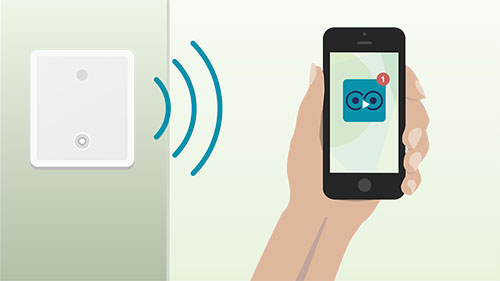Learning when and where it’s needed most
Blog / News | 02-06-20
Location-based learning, how does it work?
Whether you’re an optimistic or a more pessimistic person, do you even think “what’s the worst that could happen”?
Continuous learning in the workplace has benefits on many levels. It boosts your sustainable employability and helps keep workers and customers safe, to name just two benefits. Just imagine, for example, the potential consequences of a worker doing a job at a customer’s home while his or her safety instructions or manuals are outdated. What’s the worst that could happen? Whatever it is, it is an unnecessary risk that you want to prevent at all costs. We’re here to help you with that!
Learning what needs to be learned…
To make sure that everyone works safely and correctly, companies have rules and procedures. Training is intended to make sure workers know and follow these procedures. Drillster’s learning modules, known as drills, are extremely well suited for this. Given that rules, instructions and manuals tend to change on a regular basis, it is important to update learning material as and when new information becomes available. Only then can you create a safer situation for everyone.
…when it’s needed…
Keeping the learning material up to date will ensure that training programs are always fit for purpose. All that remains then is to make sure that workers’ actual knowledge is also updated and kept at the required level. What is key in making this happen is to repeat knowledge just when it is about to fade. This is because information, and new information, in particular, fades quickly. The Drillster algorithm calculates for each individual the point where knowledge levels start to drop off to below what they should be. As soon as that point is reached, users get a reminder telling them it’s time to start brushing up their knowledge. They can brush up whenever it suits them best, such as on the train home, in the elevator, or in between meetings. The information stays top of mind and never fades beyond the reach of memory. For more details on the Drillster way of learning, click here.
…and where it’s needed
So, people can learn and brush up whenever it suits them. But what if you could also activate learning modules where they are most relevant? In a specific location. You can with iBeacons. It is now possible to unlock drills or tests when users enter the proximity of an iBeacon, whereby you can set the proximity range from a few inches to a couple of yards. As soon as a worker enters this predefined area around the iBeacon, he or she gets a push notification saying “There’s a drill waiting for you!”. Such a drill will then contain information and/or questions about things that are important to know at that specific location, such as safety instructions or product information. Situations where this is particularly practical include just before someone starts to use a specific system that requires certain skills, when you have your whole sales team together for a product launch (when we can get together again of course), and if you want to give people an extra challenge during face-to-face training.
How it works
iBeacons communicate with the Drillster application via Bluetooth. When a user enters the predefined area around the iBeacon, he or she will instantly get a push notification in the app advising that there is a drill ready for him or her. It is easy to implement. Simply put up the iBeacons in the right place, which can be on a wall, a door, or a machine. You can also carry an iBeacon with you, such as to a training or meeting room. We will link them to the right drills and you’re all set! All that users need is the Drillster app and an account.
An example
Imagine a worker who is about to start using a dangerous machine when a push notification comes in on his phone. There’s a drill waiting for him, which contains crucial information about the machine and how to operate it. The worker opens his Drillster app and is instantly shown a brief story about important changes to the machine’s settings. This is followed by a drill made up of a few questions, including positive feedback immediately after the answer. When the worker has completed the drill, he knows everything he needs to know about the machine in question. It is safe for him to get to work and he can do so without any further interruptions.
There is also the option of making the iBeacon trigger a test instead of a drill, so that the worker can confirm that he has all the knowledge required to be able to safely operate the machine. If he answers all the questions on the test correctly, he will be clear to continue with the job at hand. However, if he turns out not to have the right answers top of mind, his safety could be at risk and he will not be allowed to operate the machine.
The right moment
Location-based learning lets you transmit or test crucial knowledge exactly when someone needs that knowledge to be able to do their job. This is not only a great way to make sure someone has important information at exactly the right moment, but it also leads to deeper learning, because the (new) knowledge is immediately put into practice. As a result, workers will better retain the information. It’s a win-win!

Want to find out more about location-based learning or the iBeacons? We’d love to tell you all about it. Give us a call +31883750500.
